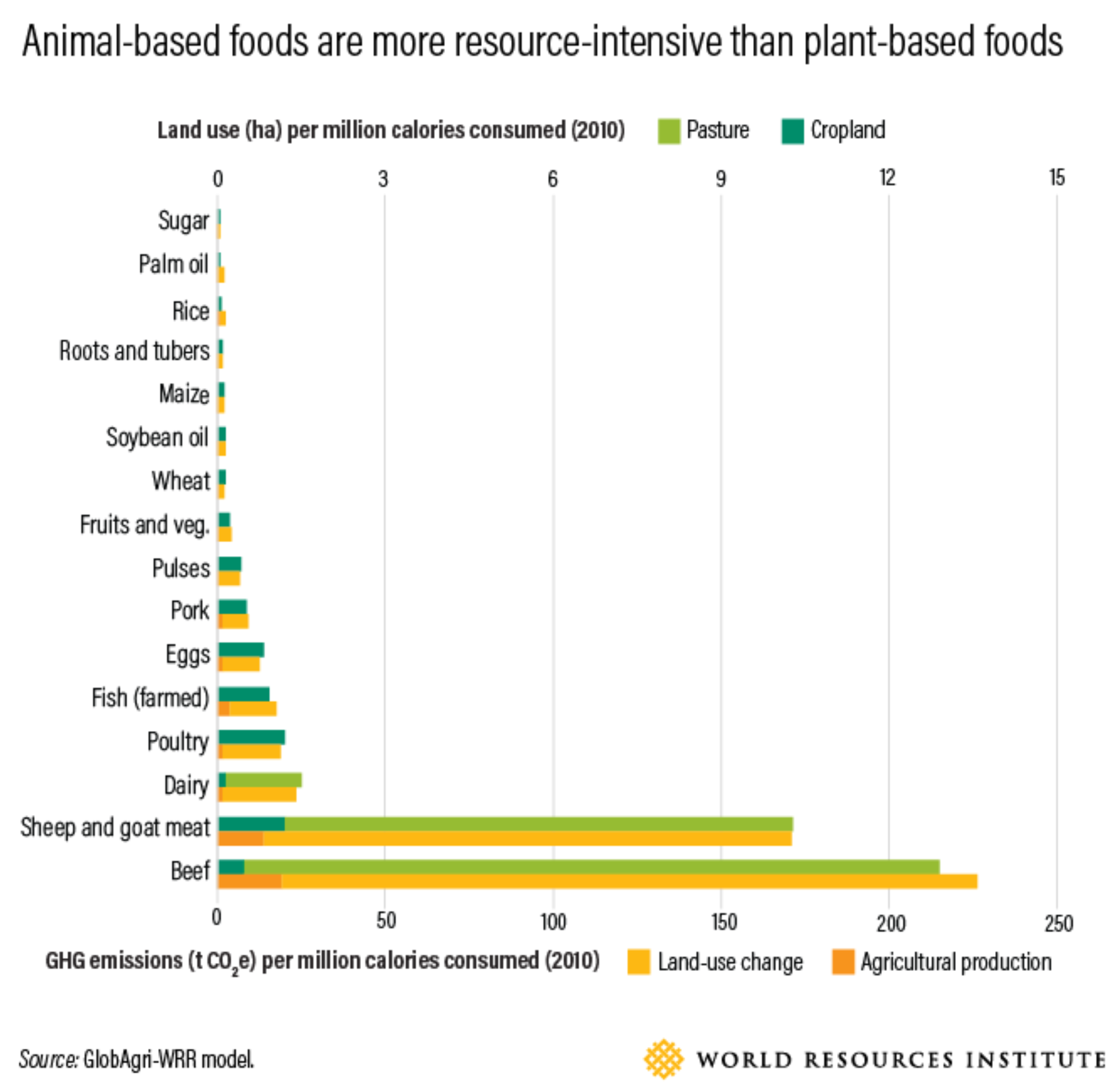If you’re feeling overwhelmed by the constant stream of bad news on the outlook for the planet amid the climate crisis, there exists a well-crafted strategy for meeting one of our most significant challenges:
How do we feed 10 billion people sustainably by 2050?
A recent report, “Creating A Sustainable Food Future”, by the World Resources Institute wri.org sets out a comprehensive plan to change how we produce and consume the food we put on our plates every day. The report features a, “Five Course Menu” of solutions that identifies five major variables in a complex equation that links collective action across many fronts to address the climate crisis, reduce global warming and feed a growing population a healthier and more sustainable diet.
The Challenges
The report shows three sustainability gaps between where we are now and where we need to be by 2050.
1. The 56% Food Gap is the difference in crop calories produced in 2010 vs. what is needed to feed the world by 2050.
2. The 593-million hectare Land Gap is the difference between the amount of land used for agriculture in 2010, and the amount projected to be needed by 2050. The Land Gap is almost twice the size of India.
3. The 11-gigaton GHG Mitigation Gap lies between the expected emissions from agriculture in 2050 and the 2 degrees C target we need to meet to limit the worst impacts of global warming.
The Solutions
So, how do we do it? The “Menu” offers five solutions:
1. Reduce demand for food and other agricultural products
2. Increase food production without expanding agricultural land
3. Protect and restore natural ecosystems and limit agricultural land shifting
4. Increase the fish supply
5. Reduce GHG emissions from agricultural production
All are tied to agriculture and in this blog we’ll look at the first solution which includes:
Reducing food loss and waste which can have a huge impact on reducing GHGs, limiting global warming and making our food systems more sustainable.
No one would prepare a meal and then throw out one-third of what’s on your plate, but this is exactly what we are doing and what our broken food systems are delivering. The chart below shows the different rates of food waste in different regions. Western countries are relatively more efficient at producing food but they throw away more than developing countries do, where most losses happen in production and distribution.
The report says reducing food waste by 25% by 2050 would have a significant impact on all three of the sustainability gaps in our current system. Recommendations include: “measuring food waste, setting reduction targets, improving food storage in developing countries and streamlining expiration labels.”
An even bigger lever is to shift to healthier, more sustainable diets. As you can see from the chart below, meat and dairy are much more resource intensive than plant based foods, so changing what we eat can make a huge difference.
Given that producing beef, lamb and goat meat (ruminants) is the most resource intensive, the report says that limiting ruminant meat consumption to 1.5 hamburgers a week would reduce the GHG gap by half and close the land gap. In North America this “would require cutting beef and lamb consumption by nearly half.” Recommendations include “improving the marketing of plant based foods, improving meat substitutes and implementing policies that favour consumption of plant based foods.”
Another significant lever is to avoid competition from bioenergy for food crops and land. The report says “bioenergy is an inefficient energy source” and that phasing out existing biofuel production on agricultural lands would reduce the food gap by 7%. Recommendations include eliminating biofuel subsidies and stopping the classification of bioenergy as “carbon-neutral” in renewable energy policies and GHG trading systems.
All these recommendations show that changing what we put on our plates can have a huge impact on the future of life on the planet. And it shows the link between what an individual can do to address the problem and the changes required in the global food and agricultural systems.




